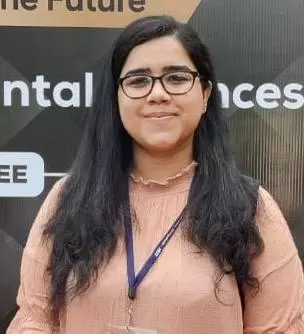- Home
- Medical news & Guidelines
- Anesthesiology
- Cardiology and CTVS
- Critical Care
- Dentistry
- Dermatology
- Diabetes and Endocrinology
- ENT
- Gastroenterology
- Medicine
- Nephrology
- Neurology
- Obstretics-Gynaecology
- Oncology
- Ophthalmology
- Orthopaedics
- Pediatrics-Neonatology
- Psychiatry
- Pulmonology
- Radiology
- Surgery
- Urology
- Laboratory Medicine
- Diet
- Nursing
- Paramedical
- Physiotherapy
- Health news
- Fact Check
- Bone Health Fact Check
- Brain Health Fact Check
- Cancer Related Fact Check
- Child Care Fact Check
- Dental and oral health fact check
- Diabetes and metabolic health fact check
- Diet and Nutrition Fact Check
- Eye and ENT Care Fact Check
- Fitness fact check
- Gut health fact check
- Heart health fact check
- Kidney health fact check
- Medical education fact check
- Men's health fact check
- Respiratory fact check
- Skin and hair care fact check
- Vaccine and Immunization fact check
- Women's health fact check
- AYUSH
- State News
- Andaman and Nicobar Islands
- Andhra Pradesh
- Arunachal Pradesh
- Assam
- Bihar
- Chandigarh
- Chattisgarh
- Dadra and Nagar Haveli
- Daman and Diu
- Delhi
- Goa
- Gujarat
- Haryana
- Himachal Pradesh
- Jammu & Kashmir
- Jharkhand
- Karnataka
- Kerala
- Ladakh
- Lakshadweep
- Madhya Pradesh
- Maharashtra
- Manipur
- Meghalaya
- Mizoram
- Nagaland
- Odisha
- Puducherry
- Punjab
- Rajasthan
- Sikkim
- Tamil Nadu
- Telangana
- Tripura
- Uttar Pradesh
- Uttrakhand
- West Bengal
- Medical Education
- Industry
Study Uncovers Mechanism for Regenerating Lost Tooth and Bone - Video
Overview
In a recent study, researchers from the Institute of Science Tokyo (Science Tokyo) have identified two distinct stem cell lineages responsible for forming the tooth root and surrounding alveolar bone. Their discoveries, published in two related studies in Nature Communications reveal new insights into the cellular signaling and differentiation processes that underpin natural tooth development-paving the way for future stem-cell-based therapies.
Tooth loss has long been treated with artificial replacements like implants or dentures. While effective, these methods fall short of replicating the complexity, feel, and function of natural teeth. As a result, scientists have turned their attention to understanding how teeth form in order to unlock regenerative treatments. But tooth development is a highly coordinated process, involving multiple tissues and signaling pathways that remain only partially understood.
The research team studied the cellular dynamics at the growing tip of tooth roots in genetically modified mice. Using lineage-tracing techniques, fluorescent tagging, microscopy, and gene-silencing tools, they uncovered how specific populations of stem cells specialize into different tissues within the tooth and jaw.
One stem cell population, located in the apical papilla of the developing root, expresses the signaling protein CXCL12. These cells were found to differentiate into odontoblasts (tooth-forming), cementoblasts (root surface-forming), and osteoblasts (bone-forming) through the canonical Wnt signaling pathway. The second lineage, found in the dental follicle, consists of cells expressing parathyroid hormone-related protein (PTHrP), which can become cementoblasts, periodontal ligament fibroblasts, or osteoblasts—but only under specific conditions.
"We observed that the Hedgehog–Foxf pathway needs to be suppressed to drive the alveolar bone osteoblast fate of PTHrP-expressing cells in the dental follicle, unraveling a unique tooth-specific mechanism of bone formation requiring deliberate on–off regulation of Hedgehog signaling," said Assistant Professor Mizuki Nagata from the Department of Periodontology, Graduate School of Medical and Dental Sciences at Institute of Science Tokyo (Science Tokyo), Japan,
These findings offer a deeper understanding of how the root and supporting structures of teeth form naturally.
Reference: Mizuki Nagata et al, Wnt-directed CXCL12-expressing apical papilla progenitor cells drive tooth root formation, Nature Communications (2025). DOI: 10.1038/s41467-025-61048-x



